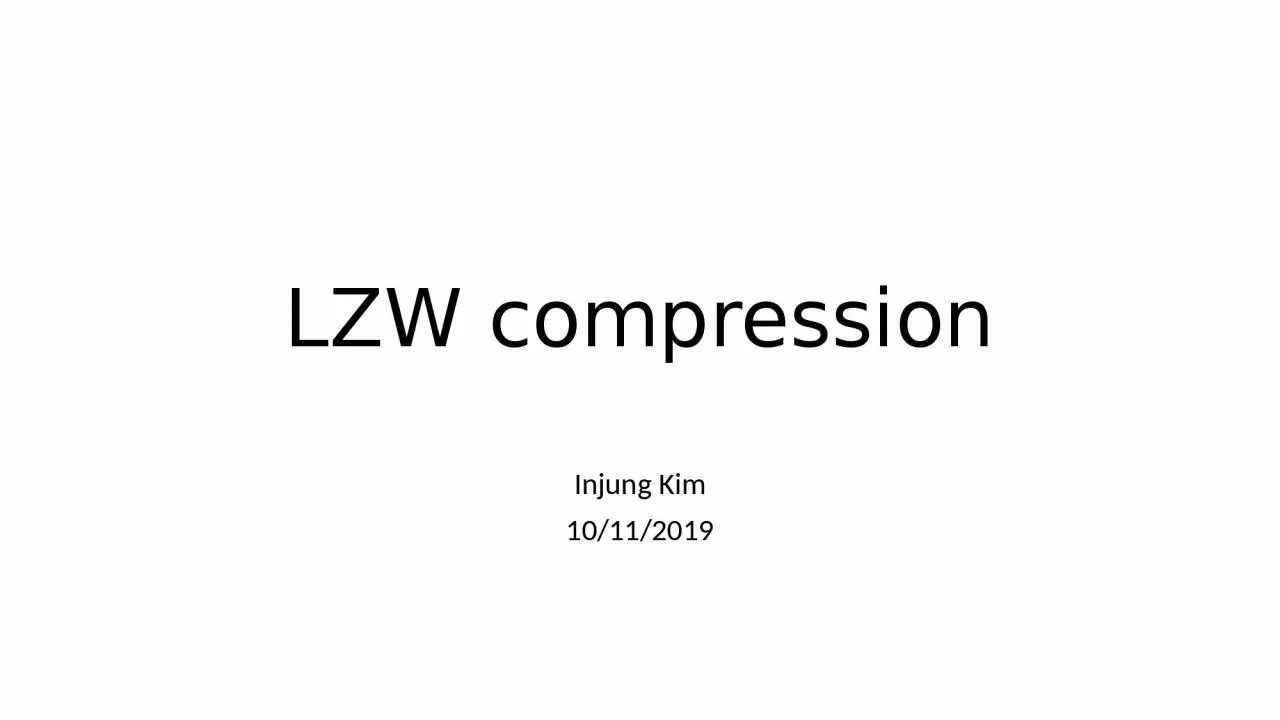

10112019 LempelZivWelch LZW Algorithm Preliminaries A dictionary that is indexed by codes is used The dictionary is assumed to be initialized with 256 entries indexed with ASCII codes 0 through 255 representing the ASCII table ID: 1044536
Download Presentation The PPT/PDF document "LZW compression Injung Kim" is the property of its rightful owner. Permission is granted to download and print the materials on this web site for personal, non-commercial use only, and to display it on your personal computer provided you do not modify the materials and that you retain all copyright notices contained in the materials. By downloading content from our website, you accept the terms of this agreement.
1. LZW compressionInjung Kim10/11/2019
2. Lempel-Ziv-Welch (LZW) AlgorithmPreliminaries:A dictionary that is indexed by “codes” is used.The dictionary is assumed to be initialized with 256 entries (indexed with ASCII codes 0 through 255) representing the ASCII table.The compression algorithm assumes that the output is either a file or a communication channel. The input being a file or buffer.Conversely, the decompression algorithm assumes that the input is a file or a communication channel and the output is a file or a buffer.DecompressionCompressionfile/bufferCompressed file/Communication channelfile/buffer
3. LZW Compression set w = NIL loop read a character k if wk exists in the dictionary w = wk else output the code for w add wk to the dictionary w = k endloop The program reads one character at a time. If the code is in the dictionary, then it adds the character to the current work string, and waits for the next one. This occurs on the first character as well. If the work string is not in the dictionary, (such as when the second character comes across), it adds the work string to the dictionary and sends over the wire (or writes to a file) the code assigned to the work string without the new character. It then sets the work string to the new character.
4. LZW Decompression read fixed length token k (code or char) output k w = k loop read a fixed length token k entry = dictionary entry for k output entry add w + first char of entry to the dictionary w = entry endloop The nice thing is that the decompressor builds its own dictionary on its side, that matches exactly the compressor's, so that only the codes need to be sent.